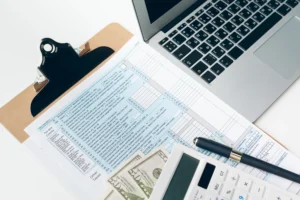There are over 30.2 million small businesses in the country. Of these, 64% start with only $10,000 in capital. While they aren’t getting off the ground with much money, what many of them do start with is a plan.
Learning how to prepare a business proposal is essential if you want to start your business. This document can help you win new business and find funding. Most of all, however, it’s designed to help you get organized and set yourself on a path for success.
Here are the six steps you need to take when creating a business proposal. With these tips, you can get the head start you need to start generating business with ease.
1. Get Organized
Many business owners feel rushed to get a business proposal sent out to prospects as soon as possible. Taking the time to get organized from the get-go, however, can help you avoid costly mistakes. Hiring an Indianapolis CPA or a “CPA near me” can make a big difference in this process.
The Buyers
It’s important to take time to learn about the client, the project, and your brand. These key components will inform the rest of your business proposal. Then, you can learn how to prepare a business proposal designed to help you close a deal.
There are a few pieces of information you’ll need to gather for a thorough proposal.
First, who are the buyers? In some cases, the person you meet won’t make the final decision regarding the deal. Try to determine who else is involved in the decision-making process.
Once you know who the buyer is, you can craft the business proposal with them in mind.
Pain Points
Next, what pain point is your audience experiencing? If you’re not sure, take a look at your competitors. What weaknesses are they experiencing that you can use to your advantage?
You might want to talk to your target audience about their experience with products and services similar to yours. What problems did they experience? What features did they find themselves wishing for?
Identifying the consumer’s pain points will give you an in. Then, you can solve those problems with your own products or services.
Budgeting
Considering your budget is crucial. Is there a budget for the overall project? Do you have a target price for your product or service?
Take a look at your competitors again to gather any information you’re lacking.
Deadlines
You might want to set a deadline and request that the prospect make a decision by a certain date. That way, you can start determining your launch or production schedule. Setting a deadline can also leverage the fear of missing out and encourage the buyer to take action as soon as possible.
Costs
Calculating your costs is another important step. You’ll want to consider labor, materials, and the total projected revenue for the business.
Once you’ve gathered this information, you can start crafting your proposal.
2. Understand the Objectives
Before you draft the entire proposal, take the time to consider the business proposal’s key objective. You’ll need to keep this objective in mind throughout the entire proposal. Otherwise, you might lose focus.
Ask yourself:
- What is the key goal for this proposal?
- What problems are customers facing?
- What problems does the product or service solve?
- Does the product or service solve the customer’s problems or the buyer’s?
Answering these questions will help you determine the overall scope of your proposal.
You might want to consider the who, what, when, where, how, and why for your proposal, too. These include:
- Who is involved in the work?
- What solutions are we offering and what can the customer expect?
- Where is the work completed and where are we delivering it to?
- How do we get the work done and how long will it take to complete?
- Why should a customer choose your business?
You’ll answer these questions in more detail throughout your proposal.
3. Start Calculating
Almost 30% of small businesses fail because they run out of money. Only half of all startups survive their fourth year in business. To fully understand your enterprise, you need to look at labor and costs.
How much will the project cost? How much will you charge the client?
Many businesses calculate costs by completing a mental walk-through of the project. Then, they write down an estimate of how long each part of the project will take. Add those hours up and multiply by 1.5.
Projects have unexpected delays. Adding in that extra time will help you build in a contingency budget.
While you’re at it, you might want to consider these financial assistance resources as well.
4. Develop a Draft
Now you’ll need to learn how to prepare a business proposal, which involves multiple components. You can separate your proposal into these sections:
- A brief introduction to your company and mission statement
- Executive summary, which focuses on the main takeaways of your proposal
- Table of contents
- Body, which includes the who, what, when, where, how, why of your business
- Conclusion
- Appendix
Your body should include the project details for your business, including a pricing grid. You can use the pricing guide to itemize your products and services. You can also include details such as scheduling, logistics, and pricing.
Consider converting this information into data charts and illustrations. You can also add testimonials from past clients to give your proposal credibility.
Once you’re done with the body, the conclusion should reemphasize the benefits and the results your company can offer. End with a compelling call-to-action that encourages the reader to perform a specific action. For example, you might want them to contact you directly or visit your website.
5. Get Editing
Now that you have a rough draft, proofread every page. Make sure to have someone else read it over, too. The second pair of eyes will ensure you don’t leave any blatant mistakes.
Otherwise, consider hiring a professional to review your proposal with you.
Check the length of your proposal, too. Cut out anything that sounds unnecessary to keep it clear, concise, and professional.
You can also take classes online for free that can teach you how to write and edit a proposal easily.
6. Send It out and Follow Up
The final step is to send out your proposal. Then, wait!
Don’t follow-up too quickly. Instead, give your prospective buyer time. You can also use email tracking tools to help you time your follow-up email perfectly.
6 Steps for Success: How to Prepare a Business Proposal
Ready to turn your new ideal into a success story? Review these steps on how to prepare a business proposal first. With these tips, you can craft a proposal that will help you win a contract with ease!
Need to talk about your business calculations with an expert?
Call to Schedule a Free Consultation With an Indianapolis CPA Today
If you are the owner of a small business who wants to ensure that your business grows and succeeds, call to schedule a free consultation with an Indianapolis CPA as a CPA near me today. The experienced professionals at OnTarget CPA will evaluate your small business plan and help you identify its strengths and weaknesses. We serve the cities of Indianapolis, Carmel, Fishers, Noblesville, Westfield, Zionsville, Geist, Greenwood, Avon, Brownsburg, and surrounding communities. Check out our website at ontargetcpa.com or give us a call at 317-820-2000 and learn more about how a CPA near me who is an Indianapolis CPA can help you reach your business goals.






